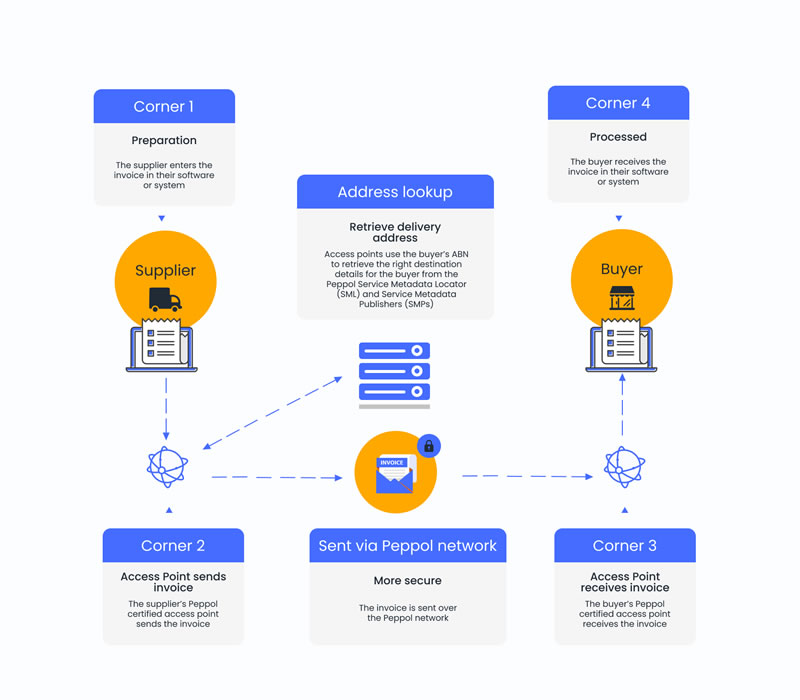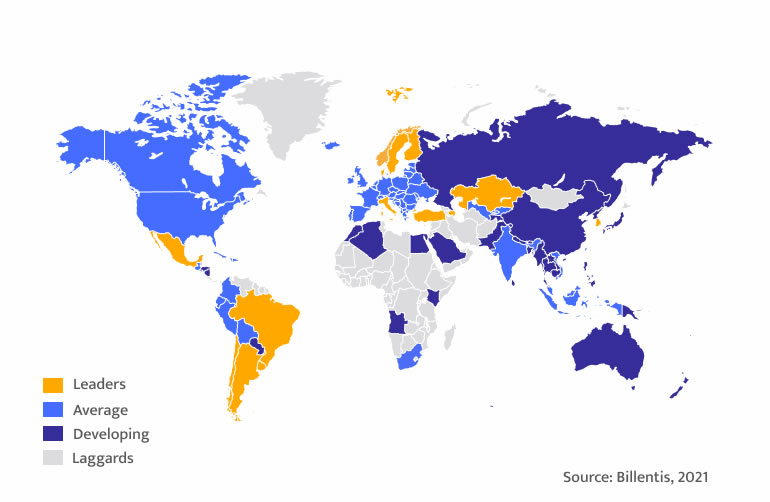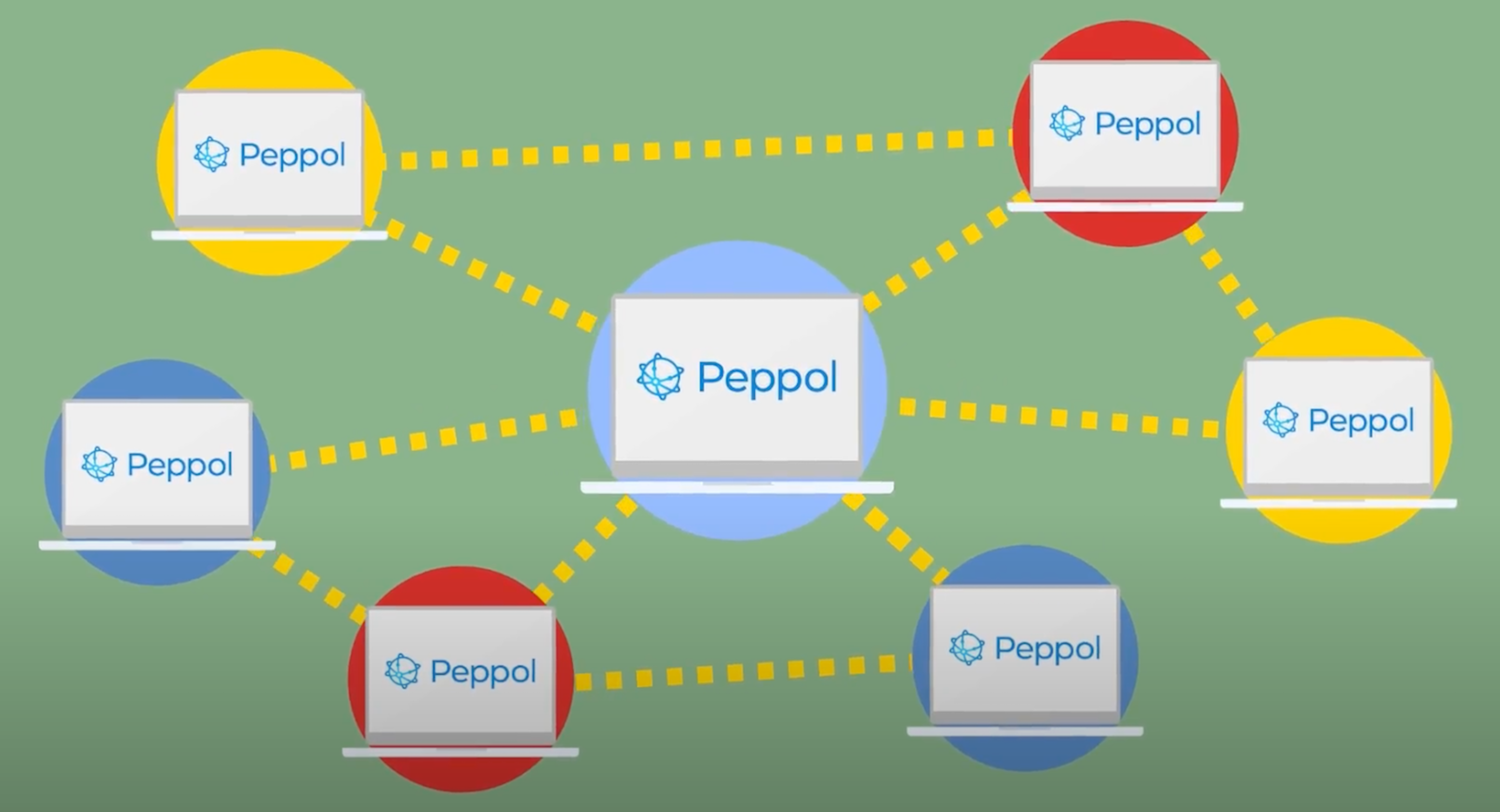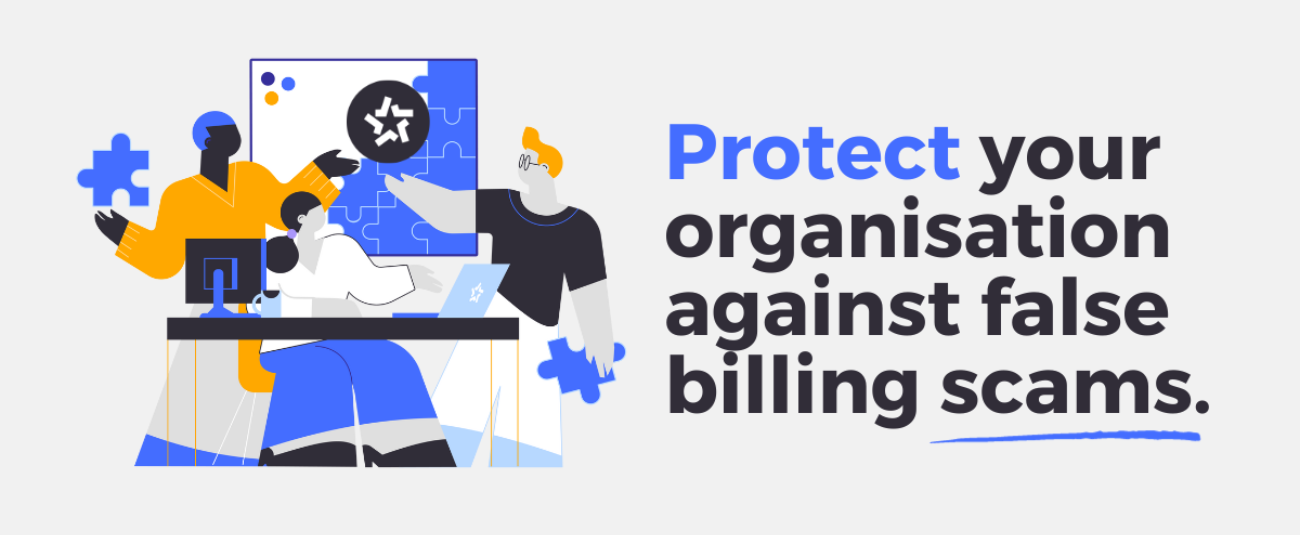Why use Peppol for eInvoicing?

With the increasing use of digital technologies in all spheres of work, eInvoicing sounds like it should already be the norm. Surprisingly, even in many progressive countries, this is far from the case. There is uneven adoption of eInvoicing across continents, and a large proportion of businesses are still sending and receiving invoices as PDFs over email, or even as paper invoices by mail. With global procurement increasing, this really shouldn’t be the case..
Luckily, the easy domestic and international transfer of electronic business documents is what Peppol aims to address, with a set of common standards regarding transport protocol and business document library formats that bring interoperability across borders, both for public sector organizations and private companies. Keep reading to see how Peppol works and how it can benefit your business.
What is Peppol used for?
As mentioned above, Peppol is used for the secure transfer and retrieval of electronic business documents, although for the moment, most of the activity on the Peppol network is related to eInvoicing.
Peppol was a project initially funded by the European Commission in 2008. Public sector organizations were the first to start using Peppol, but in countries like Norway where adoption for B2B purposes was encouraged, Peppol is now widespread. Due to the ease and cost-effectiveness with which B2B and B2G eInvoicing can be conducted, Peppol continues to grow, with greater saturation in Europe and uptake in Singapore, Australia, and New Zealand. As of 2021, 42 countries had certified Peppol Access Points, and more than 130 million transactions (for the year 2019-2020) were made on the network.

Components of the Peppol network
Four-corner model – This is the central feature of the Peppol network, allowing one party to reach any other with ease. The Two-corner model is a direct link established between two participants, while the Three-corner model is a closed network where one service provider handles all transactions for all participants. The Four-corner model unites different service providers through Access Points (more on this below), meaning it doesn’t matter which provider a participant chooses to work with, they will still have access to any other registered Peppol participant. This is why Peppol is referred to as a true connect-once-reach-everyone network.
Service Data Publisher (SMP) and Service Metadata Locator (SML)
All organizations that receive e-documents via Peppol publish their electronic receiving addresses and supported document types. An SMP, like an address book, contains a business’ address (URL) and receiving capabilities. An SMP can be bundled with an Access Point or provided as an independent service.
SML is a centralized component that stores the location of all SMPs for each participant (receiver) within the Peppol Network. When sending electronic documents to a business on the network, the SML returns the address to the SMP that contains all necessary details for a correct transfer.
BIS Documents
Business Interoperability Specifications (BIS) ensure standardization of documents sent through the Peppol network by stipulating certain components such as product catalogs, order/order confirmation/despatch advice. Businesses must operate by the BIS in order to be validated by Peppol.

What is a Peppol Access Point?
The Peppol Access Point is your gateway to the Peppol network, allowing you to send and receive business documents of all types with ease.
As shown in the section above, Access Points work within the four-corner model, sending and receiving e-documents according to the agreed Peppol formats. Although formats related to eInvoicing are the most popular, Peppol also supports numerous other document formats, such as product catalog, order, order response, and more.
Some businesses set up Access Points themselves, but it requires registration with a local Peppol authority (or OpenPeppol in the absence of a local authority), a lengthy accreditation process that involves Peppol membership fees, proof of technical competency, hosting, and then a cycle of continuing maintenance, development and support.
Especially for smaller businesses, using the Peppol edelivery network through a certified Peppol Access Point provider is not only easier, but cheaper in the long run.
Which regions are using Peppol for eInvoicing?
It’s surprising that many businesses continue to process eInvoices and other e-documents manually. Enforced social distancing during the Covid-19 pandemic has undoubtedly caused companies to invest more in digital solutions, but as far as many regions are concerned, widespread adoption of eInvoicing is not predicted to really take hold until 2022 and beyond.
The Nordic countries are particularly strong in this area, with Denmark making B2G eInvoicing mandatory in 2005, and other surrounding countries, including those in Western Europe, following suit with incentivized schemes to increase uptake. South America is another region where eInvoicing is thriving. Chile, Mexico, Brazil and Argentina have seen high public and private sector use; for the private sector, automated and more efficient business processes are the goal, while from a government perspective, eInvoicing is a way to help counter high rates of tax evasion.
In Asia, eInvoicing is still very much in the development stage, excluding Singapore, whose Info-communications Media Development Authority (IMDA) has been a Peppol authority since 2018, facilitating the framework on a national level. There have also been reports of Japan has already adopted Peppol in 2021, although their largely paper-based administrative economy means that it will be a while before large-scale saturation is achieved.
Seeing as imperative the need to keep in step with the global market, Australia and New Zealand have adopted Peppol eInvoicing through the Australian Taxation Office and New Zealand Ministry of Business Innovation and Employment.
What are the benefits of eInvoicing?
Whether you are part of a public sector organization, a private company, or have dealings with both, eInvoicing provides very clear benefits, which is exactly why the Peppol network is expanding at such a quick rate.
Cost-savings linked to automated processing
Businesses manually handling orders and invoices will know that it is slow, error-prone, and can involve under-utilizing skilled workers who could be undertaking activities that bring greater value to a business. The use of PDF invoicing is an improvement, but not so much better. Based on research conducted by the Australian Taxation Office (ATO), it was found that it costs:
- $30.87 (AUD) to process a paper invoice
- $27.67 to process a PDF invoice
- $9.18 to process an eInvoice.
European Commission research from 2016 finds similar numbers:
- Direct staff costs of compiling and sending out paper invoices are between €2.50 and €10 per invoice.
- Receiving and settling paper invoices is even more costly, at an estimated €5 to €15 per invoice, as the reconciliation needs to be done by hand.
- The processing of an eInvoice is said to be under €5.
In this case, we believe the numbers speak for themselves, with the EC detailing moderate to significant savings in the following areas:
- Cost of paper
- Printing costs
- Mailing costs
- Manual handling when sending or receiving
- Review and approval of invoices
- Entry of data into ERP systems
- Accounting key assignment
- Balancing (reduced error in data entry)
- Archiving, handling and storage
More efficiency, fewer errors, and faster payments
Leaving direct costs aside, Peppol allows for greater efficiency, with invoices always guaranteed to reach the recipient. As a structured data file, no part of the eInvoice needs to be manually entered into the receiving system, reducing manual errors. In addition, as the file needs to conform to Peppol standards, the quality of the data is better, with no missing information that needs to be chased up. These factors add up to more reliable data and faster payments.
Lower risk of fraud
The different technical standards, service specifications and regulations mandated by Peppol authorities help keep the Peppol network safe, which is why it has the confidence of governments around the world. To operate on the Peppol network, trading partners are often authenticated through their business numbers, lowering the risk of fraudulent transactions being exchanged.
Compare this to going through email, which can easily be infiltrated, with scammers doctoring invoices to reroute payments to their own accounts. With billions of dollars being lost to fraudulent invoices and the problem only increasing due to Covid, a secure system like Peppol is needed now more than ever.
Facilitation of global trade
Especially for smaller companies, Peppol can mean greater access to international markets, without the expense of having to adopt different electronic procurement systems. It doesn’t matter which Access Point provider you work with, or Peppol Authority you register with. With the four-corner model, you can connect with any public sector organization or private company that is on the network.
Easy SAP Peppol Access Point integration
For companies using an SAP solution, they can access the Peppol network in the system they are used to, without having to purchase new software. The easiest way is to use an established Peppol company’s API, connecting it to your existing software without having to worry about things like hosting or obtaining additional certifications.
Environmentally friendly
eInvoicing eliminates paper, requires fewer energy resources, and makes no demands on physical storage space. All these factors add up to cost savings and reduced waste, which is good for your business and the environment.
Are Peppol eInvoices European Norm (EN) compliant?
The European Norm (EN) ensures continuity when conducting trade within the European single market. OpenPeppol mandates its own Business Interoperability Specifications (BIS) that standardize documents sent and received by Access Points on Peppol’s secure network.
As stated on the OpenPeppol website regarding the latest iteration of the BIS (3.0):
The Peppol BIS Billing 3.0 is a compliant (CIUS) implementation of the European eInvoicing standard, EN 16931. Consequently, those who receive invoices that comply to this BIS are also compliant to the EU Directive 2014/55 on electronic invoices.
This means you can get started exchanging EN compliant invoices over the PEPPOL network without any problems.
Get started with Peppol today
Peppol provides clear business benefits, including cost-savings, reduced processing errors and protection from fraud. While already widespread in Europe, it is now being rolled out by the governments of other countries, with flow-on effects to the private sector.
Setting up an Access Point needed to transfer documents on the network can be tricky, but our company, Tickstar, offers a better option. By implementing our service, Tickstar, either as a white-labeled or shared instance, gives organizations of any size the opportunity to implement Peppol in their business in the most hassle free way possible; without development, hosting, ongoing maintenance, and support. We have been in the industry for years, providing quick setup, affordable pricing, and ongoing assistance to small businesses, national banks, and governmental institutions through our Peppol service. Contact Tickstar today to see how Peppol eInvoicing can help streamline your B2B or B2G operations.



